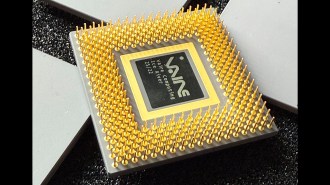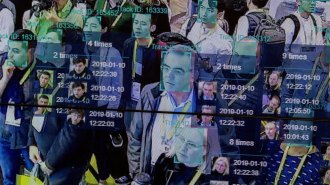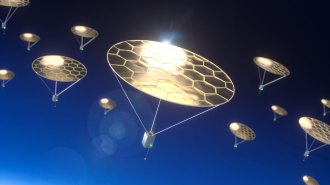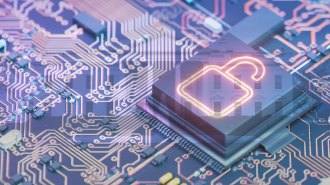Tech
Sign up for our newsletter
We summarize the week's scientific breakthroughs every Thursday.
-
 Artificial Intelligence
Artificial IntelligenceBiased online images train AI bots to see women as younger, less experienced
Age and gender bias in online images feeds into AI tools, revealing stereotypes shaping digital systems and hiring algorithms, researchers report.
By Sujata Gupta - Artificial Intelligence
AI-designed proteins test biosecurity safeguards
AI edits to the blueprints for known toxins can evade detection. Researchers are improving filters to catch these rare biosecurity threats.
-
 Genetics
GeneticsAI generated its first working genome: a tiny bacteria killer
Bacteriophages designed with AI kill E. coli faster than a well-studied strain, but the tech needs regulation before moving beyond lab dishes.
-
 Health & Medicine
Health & MedicineCan AI spot harmful health side effects on social media?
A new AI tool discovers harmful side effects of cannabis products from Reddit posts. Public health workers could use this info to help keep people safe.
-
 Tech
TechThis experimental computer chip reuses energy
A first-of-its-kind test shows that reusing energy within a computer chip can work, thanks to two techy tricks.
-
 Earth
Earth20 years after Hurricane Katrina, is the U.S. better prepared?
Hurricane forecasts have improved since Katrina, but risks from climate change and budget cuts loom.
-
 Artificial Intelligence
Artificial IntelligenceCan fake faces make AI training more ethical?
Demographic bias gaps are closing in face recognition, but how training images are sourced is becoming the field’s biggest privacy fight.
By Celina Zhao -
 Physics
PhysicsSunlight is all that’s needed to keep these tiny aircraft aloft
Sun-powered fliers could use photophoretic forces to hover in the mesosphere, gathering data from a region off limits to planes and balloons.
-
 Artificial Intelligence
Artificial IntelligenceThe U.S. government wants to go ‘all in’ on AI. There are big risks
Government agencies are rapidly adopting AI, but experts warn the push may outpace privacy safeguards and leave data vulnerable to leaks and attacks.
By Ananya -
 Artificial Intelligence
Artificial IntelligenceCan AI ‘feel’ guilt?
Research based on game theory suggests if we program AI agents with a sense of guilt, they could behave more cooperatively, much like humans do.
- Health & Medicine
AI is designing proteins that could help treat cancer
A team used generative AI to enhance T cells’ ability to fight melanoma. The immunotherapy approach needs more testing before use in cancer patients.
By Meghan Rosen -
 Archaeology
ArchaeologyAI reveals new details about a famous Latin inscription
An analysis of the Res Gestae Divi Augusti using AI reveals its legal tone and imperial messaging, offering new insights missed by historians.
By Tom Metcalfe